Control & Instrumentation Engineer
50+ Control & Instrumentation Engineer Interview Questions and Answers

Asked in RSWM

Q. Explain working principle of oxygen analyser and which system you are using, currently?
An oxygen analyzer measures the concentration of oxygen in a gas or liquid stream.
The working principle of an oxygen analyzer involves the use of a sensor that reacts with oxygen to produce an electrical signal proportional to the oxygen concentration.
There are various types of oxygen analyzers such as zirconia, paramagnetic, and electrochemical sensors.
Currently, we are using a zirconia-based oxygen analyzer in our system.

Asked in RSWM

Q. Do you know about DCS programming languages and logic modification? Explain.
DCS programming languages include Function Block Diagram, Sequential Function Chart, and Structured Text.
DCS programming languages are used to create logic for Distributed Control Systems.
Function Block Diagram (FBD) is a graphical language that uses blocks to represent functions and their interconnections.
Sequential Function Chart (SFC) is a graphical language that represents the sequence of actions in a process.
Structured Text (ST) is a high-level programming language that ...read more
Control & Instrumentation Engineer Interview Questions and Answers for Freshers

Asked in Reliance Industries

Q. What is the main difference between RTD and Thermistor?
RTD measures temperature using resistance while thermistor uses resistance-temperature relationship.
RTD has a linear resistance-temperature relationship while thermistor has a non-linear one.
RTD has a higher accuracy and stability compared to thermistor.
RTD is more expensive than thermistor.
RTD is commonly used in industrial applications while thermistor is used in consumer electronics.
Examples of RTD include platinum, nickel, and copper while examples of thermistor include N...read more

Asked in Reliance Industries

Q. Why is a 4-20 mA signal preferred over a 0-20 mA signal?
4-20 mA signal is preferred over 0-20 mA signal due to its ability to detect faults and provide a clear zero point.
4-20 mA signal has a clear zero point, making it easier to detect faults in the system.
It allows for a wider range of measurement values, as the 0-4 mA range can be used to indicate faults or out-of-range conditions.
4-20 mA signal is less susceptible to noise and interference compared to 0-20 mA signal.
It is a standard signal used in many industrial applications,...read more

Asked in MSN Laboratories

Q. What are the differences in the wiring configurations of star and delta systems, particularly in the context of DOL (Direct-On-Line) starters?
Star and delta configurations differ in wiring, affecting motor starting and torque characteristics in DOL starters.
Star configuration connects each motor winding to a common point, reducing voltage and current during startup.
Delta configuration connects windings in a loop, providing full voltage and higher starting torque.
DOL starters typically use star configuration for high starting current reduction in large motors.
Example: A 400V motor in star will see 230V across each w...read more
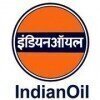
Asked in Indian Oil Corporation

Q. What is instrumentation and why you choose instrumentation
Instrumentation is the science of measuring and controlling physical variables.
Instrumentation involves the use of various instruments and devices to measure and control physical variables such as temperature, pressure, flow, and level.
It is used in various industries such as manufacturing, oil and gas, and healthcare.
Instrumentation plays a crucial role in ensuring the safety and efficiency of industrial processes.
I chose instrumentation because of my interest in physics and...read more
Control & Instrumentation Engineer Jobs
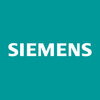



Asked in Meghalaya Cements

Q. What is the difference between P, PI, and PID controllers?
P, PI, and PID are control strategies used in automation for process control, differing in their response to errors.
P (Proportional): Responds to the current error. Example: A thermostat that adjusts temperature based on current deviation.
PI (Proportional-Integral): Combines P with an integral action to eliminate steady-state error. Example: A water level controller that adjusts flow based on both current level and past levels.
PID (Proportional-Integral-Derivative): Adds a de...read more
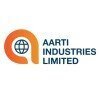
Asked in Aarti Industries

Q. What important points are considered during the sizing of a control valve?
Important points considered during sizing of control valve
Fluid properties such as density, viscosity, and pressure
Flow rate and required pressure drop
Valve type and characteristics (linear, equal percentage, quick opening)
Process conditions and control system requirements
Allowable noise and cavitation levels
Valve sizing equations and calculations
Share interview questions and help millions of jobseekers 🌟


Asked in Aarti Industries

Q. What points are considered during the sizing of a flowmeter?
Points to consider during sizing of flowmeter
Fluid type and properties
Flow rate range
Pipe size and material
Accuracy requirements
Installation conditions
Budget constraints

Asked in Reliance Industries

Q. How do you identify an orifice in a pipeline?
An orifice in a pipeline can be identified by measuring the pressure drop across it.
Measure the pressure drop across the pipeline using a differential pressure transmitter
Compare the pressure drop with the expected value for the given orifice size
Use a flow meter to confirm the flow rate through the orifice
Inspect the pipeline for any markings or labels indicating the presence of an orifice

Asked in MSN Laboratories

Q. What is the process for programming and wiring a Variable Frequency Drive (VFD)?
Programming and wiring a VFD involves setup, configuration, and connection to control systems for motor speed regulation.
Select the appropriate VFD based on motor specifications and application requirements.
Wiring involves connecting the VFD to the power supply, motor, and control devices (e.g., switches, sensors).
Configure the VFD parameters such as voltage, frequency, acceleration, and deceleration settings using the keypad or software.
Set up control methods (e.g., digital ...read more

Asked in Meghalaya Cements

Q. How many level measuring devices are used in your plant, and how do they work?
Our plant utilizes various level measuring devices, including ultrasonic, radar, and capacitive sensors for accurate level measurement.
Ultrasonic level sensors use sound waves to measure the distance to the surface of the liquid.
Radar level sensors emit microwave signals and measure the time it takes for the signal to return.
Capacitive level sensors detect changes in capacitance caused by the level of the material.
Magnetostrictive level sensors use a magnetic float and a wire...read more

Asked in Meghalaya Cements

Q. How many temperature measuring devices are used in your plant and how do they work?
Our plant utilizes various temperature measuring devices for accurate monitoring and control of processes.
Thermocouples: Used for high-temperature applications, they generate a voltage based on temperature differences.
RTDs (Resistance Temperature Detectors): Provide high accuracy and stability, commonly used in industrial processes.
Thermistors: Offer high sensitivity for temperature changes, often used in HVAC systems.
Infrared Sensors: Non-contact devices used for measuring s...read more

Asked in Meghalaya Cements

Q. How does Weigh feeder works? And, calibration and drop test.
A weigh feeder measures and controls the flow of bulk materials by weight, ensuring accurate dosing in various applications.
Weigh feeders use a belt conveyor to transport materials while measuring their weight.
They typically consist of a load cell that detects the weight of the material on the belt.
The speed of the belt is controlled to achieve the desired feed rate, which is calculated based on weight and time.
Calibration involves adjusting the system to ensure accurate weig...read more

Asked in RSWM

Q. Explain the CEMS analyzer and its working principle.
CEMS analyser is used to measure emissions from industrial processes. It works on the principle of gas chromatography or infrared spectroscopy.
CEMS stands for Continuous Emissions Monitoring System
It is used to measure pollutants like CO, SO2, NOx, etc. emitted from industrial processes
The analyser works by drawing a sample of the exhaust gas and passing it through a detector
The detector uses gas chromatography or infrared spectroscopy to identify and measure the concentratio...read more

Asked in RSWM

Q. Explain the TSI (Bentley) vibration and speed monitoring system.
TSI(Bentley) vibration and speed monitoring system is a tool used for monitoring and analyzing the vibration and speed of rotating machinery.
TSI(Bentley) vibration and speed monitoring system helps in detecting any potential issues in rotating machinery before they become major problems.
It provides real-time monitoring and analysis of vibration and speed data, allowing for early detection of faults and potential failures.
The system can be used in a variety of industries, incl...read more
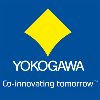
Asked in Yokogawa

Q. What are effective strategies for managing conflicts in the workplace?
Effective conflict management strategies foster collaboration and improve workplace relationships.
Active Listening: Encourage open dialogue by listening to all parties involved. For example, in a disagreement over project priorities, allow each team member to express their views fully.
Seek Common Ground: Identify shared goals to unite conflicting parties. For instance, if two engineers disagree on a design approach, focus on the project's overall success.
Stay Calm and Profess...read more

Asked in MSN Laboratories

Q. What can you explain about control valves and PID controllers?
Control valves regulate fluid flow, while PID controllers maintain desired process variables through feedback mechanisms.
Control valves adjust flow rate based on signals from controllers.
PID controllers use Proportional, Integral, and Derivative actions to minimize error.
Example: A control valve in a heating system regulates water flow to maintain temperature.
PID controllers are widely used in industrial automation for precise control.
Example: A PID controller in a chemical p...read more

Asked in Worley

Q. codes and standards for orifice sizing,ratings for level instruments,Productivity,and many more.
Codes and standards play a crucial role in ensuring proper sizing and ratings for orifice and level instruments in the field of control & instrumentation engineering.
Codes and standards such as ASME, API, and ISA provide guidelines for orifice sizing and ratings.
Proper selection of orifice size is essential for accurate flow measurement.
Level instrument ratings are determined based on factors like pressure, temperature, and material compatibility.
Adhering to industry standard...read more

Asked in Megha Engineering & Infrastructures

Q. How many types of water pumps are there?
There are several types of water pumps used for different applications.
Centrifugal pumps
Submersible pumps
Reciprocating pumps
Diaphragm pumps
Jet pumps
Gear pumps
Screw pumps
Vane pumps
Axial flow pumps
Mixed flow pumps

Asked in Meghalaya Cements

Q. Tell me about the instruments used in your plant.
In our plant, we utilize pressure transmitters for monitoring and controlling process pressure efficiently.
Pressure transmitters convert pressure into an electrical signal for accurate monitoring.
They are essential for maintaining safety and efficiency in processes like distillation.
Examples include the Rosemount 3051 and Yokogawa EJA series.
Used in various applications such as oil & gas, chemical processing, and water treatment.

Asked in Reliance Industries

Q. What is the purpose of an orifice tab?
An orifice tab is used to accurately measure the flow rate of a fluid through a pipeline.
It creates a differential pressure across the orifice plate, which is proportional to the flow rate.
The tab is placed upstream of the orifice plate to ensure accurate measurement.
The tab can be designed in different shapes and sizes depending on the application.
It is commonly used in industries such as oil and gas, chemical, and water treatment.
The data collected from the orifice tab can ...read more

Asked in Eisai Pharmaceuticals

Q. How do Temperature Elements and RTDs work?
Temperature Element and RTD are used in control systems to measure temperature accurately.
Temperature Element is a device that measures temperature and converts it into a signal.
RTD (Resistance Temperature Detector) is a type of temperature sensor that operates on the principle that the electrical resistance of a metal changes predictably with temperature.
RTDs are commonly made of platinum, nickel, or copper.
RTDs provide accurate and stable temperature measurements.
Calibratio...read more

Asked in Reliance Industries

Q. Why is the orifice tap provided?
Orifice tap is provided to measure the pressure drop across the orifice plate.
Measures pressure drop
Helps calculate flow rate
Used in flow measurement systems

Asked in Reliance Power

Q. How does a flame scanner detect coal or oil flame?
A flame scanner detects coal or oil flame by sensing the ultraviolet or infrared radiation emitted by the flame.
Flame scanners use sensors to detect the ultraviolet or infrared radiation emitted by the flame
The sensors convert the radiation into an electrical signal which is then processed by the control system
The control system analyzes the signal to determine the presence and characteristics of the flame
Based on the analysis, the control system can adjust the fuel flow to m...read more

Asked in Yokogawa

Q. What is the most important aspect of a project?
The most important aspect of a project is effective communication and collaboration among all stakeholders.
Clear objectives: Define project goals to ensure everyone is aligned. For example, in a control system upgrade, specify performance targets.
Stakeholder engagement: Regularly involve all parties, from engineers to management, to gather input and address concerns.
Risk management: Identify potential risks early and develop mitigation strategies. For instance, assess the imp...read more

Asked in Meghalaya Cements

Q. How do you calibrate a pressure transmitter?
Calibrating a pressure transmitter involves comparing its output to a known pressure standard and adjusting as necessary.
1. Gather necessary equipment: pressure calibrator, reference pressure source, and the transmitter to be calibrated.
2. Connect the pressure transmitter to the reference pressure source.
3. Apply a known pressure to the transmitter and record the output signal.
4. Compare the output signal to the expected value from the reference source.
5. Adjust the transmitt...read more

Asked in Reliance Industries

Q. Why is the Orifice tab provided?
Orifice tab is provided to indicate the size of the orifice and its flow rate.
Orifice tab helps in identifying the size of the orifice and its flow rate.
It is used in flow measurement devices like orifice plates, venturi meters, etc.
The tab is usually made of stainless steel and is welded to the orifice plate.
The tab is marked with a number or letter to indicate the size of the orifice.
The flow rate can be calculated using the size of the orifice and the pressure drop across ...read more

Asked in Power Mech Projects

Q. What is a thermocouple and what is its working principle?
A thermocouple is a temperature sensor that works on the principle of Seebeck effect.
Thermocouples are made of two different metals joined together at one end.
When there is a temperature difference between the two ends, a voltage is generated.
This voltage is proportional to the temperature difference and can be measured to determine the temperature.
Thermocouples are commonly used in industrial applications for temperature measurement.
Examples of thermocouple types include K, ...read more

Asked in Onshore Construction

Q. Why are you interested in this company?
I'm here to contribute my expertise in control systems and instrumentation to enhance operational efficiency and safety.
I aim to leverage my skills in PLC programming to optimize automation processes, like improving production line efficiency.
I have experience with SCADA systems, which I can use to monitor and control industrial processes remotely.
My background in sensor technology will help in implementing accurate measurement systems for better data collection.
I am eager to...read more
Interview Experiences of Popular Companies


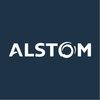





Reviews
Interviews
Salaries
Users

















